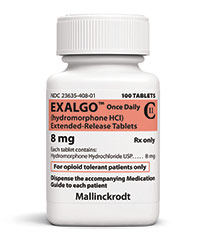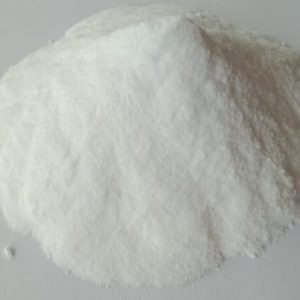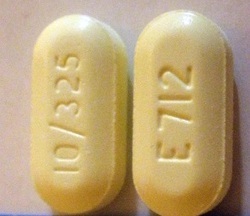Buy dilaudid online
£6.5£8.9 (-27%)
Dilaudid (Hydromorphone) 8mg Minimum order of 100 Tablets
ABOUT
(buy dilaudid online-buy dilaudid 8mg-buy dilaudid pills online)
Hydromorphone, also known as dihydromorphinone, and sold under the brand name Dilaudid among others, is an opioid used to treat moderate to severe pain.[4] Typically, long-term use is only recommended for pain due to cancer.[6] It may be used by mouth or by injection into a vein, muscle, or under the skin.[4] Effects generally begin within half an hour and last for up to five hours. Buy Dilaudid online
Common side effects include dizziness, sleepiness, nausea, itchiness, and constipation.[4] Serious side effects may include abuse, low blood pressure, seizures, respiratory depression, and serotonin syndrome.[4] Rapidly decreasing the dose may result in opioid withdrawal.[4] Generally, use during pregnancy or breastfeeding is not recommended.[7] Hydromorphone is believed to work by activating opioid receptors, mainly in the brain and spinal cord.[4] Hydromorphone 2 mg IV is equivalent to approximately 10 mg morphine by mouth.[6]
Hydromorphone was patented in 1923.[8] It is available as a generic medication.[4] In 2017, it was the 205th most commonly prescribed medication in the United States, with more than two million prescriptions.[9][10] Hydromorphone is made from morphine
Medical use
(buy dilaudid online-buy dilaudid 8mg-buy dilaudid pills online)
Hydromorphone is used to treat moderate to severe pain.[4] It may be used by mouth or by injection into a vein, muscle, or under the skin.[4] Effects generally begin within half an hour and last for up to five hours.[4] Typically, long-term use is only recommended for pain due to cancer.[6] A 2016 Cochrane review found little difference in benefit between hydromorphone and other opioids for cancer pain.[12]
Side effects
(buy dilaudid online-buy dilaudid 8mg-buy dilaudid pills online)
Adverse effects of hydromorphone are similar to those of other potent opioid analgesics, such as morphine and heroin. The major hazards of hydromorphone include dose-related respiratory depression, urinary retention, bronchospasm, and sometimes, circulatory depression.[13] More common side effects include lightheadedness, dizziness, sedation, itching, constipation, nausea, vomiting, headache, perspiration, and hallucinations.[13] These symptoms are common in ambulatory patients and in those not experiencing severe pain.
Simultaneous use of hydromorphone with other opioids, muscle relaxants, tranquilizers, sedatives, and general anesthetics may cause a significant increase in respiratory depression, progressing to coma or death. Taking benzodiazepines (such as diazepam) in conjunction with hydromorphone may increase side effects such as dizziness and difficulty concentrating.[14] If simultaneous use of these drugs is required, dose adjustment may be made.[15]
A particular problem that may occur with hydromorphone is accidental administration in place of morphine due to a mix-up between the similar names, either at the time the prescription is written or when the drug is dispensed. This has led to several deaths and calls for hydromorphone to be distributed in distinctly different packaging from morphine to avoid confusion.[16][17]
Massive overdoses are rarely observed in opioid-tolerant individuals, but when they occur, they may lead to circulatory system collapse. Symptoms of overdose include respiratory depression, drowsiness leading to coma and sometimes to death, drooping of skeletal muscles, low heart rate, and decreasing blood pressure. At the hospital, individuals with hydromorphone overdose are provided supportive care, such as assisted ventilation to provide oxygen and gut decontamination using activated charcoal through a nasogastric tube. Opioid antagonists, such as naloxone, also may be administered concurrently with oxygen supplementation. Naloxone works by reversing the effects of hydromorphone, and only is administered in the presence of significant respiratory depression and circulatory depression.[15]
Sugar cravings associated with hydromorphone use are the result of a glucose crash after transient hyperglycemia following injection, or a less profound lowering of blood sugar over a period of hours, in common with morphine, heroin, codeine, and other opiates.
Hormone imbalance
As with other opioids, hydromorphone (particularly during heavy chronic use) often causes temporary hypogonadism or hormone imbalance.[18]
Neurotoxicity
In the setting of prolonged use, high dosage, and/or kidney dysfunction, hydromorphone has been associated with neuroexcitatory symptoms such as tremor, myoclonus, agitation, and cognitive dysfunction.[19][20][21] This toxicity is less than that associated with other classes of opioids such as the pethidine class of synthetics in particular.
Withdrawal
Users of hydromorphone may experience painful symptoms if the drug is suspended.[22] Some people cannot tolerate the symptoms, which results in continuous drug use.[22] Symptoms of opioid withdrawal are not easy to decipher, as there are differences between drug-seeking behaviors and true withdrawal effects.[23] Symptoms associated with hydromorphone withdrawal include:[22][23][24]
- Abdominal pain
- Anxiety or panic attacks
- Depression
- Goose bump skin
- Inability to enjoy daily activities
- Muscle and joint pain
- Nausea
- Runny nose and excessive secretion of tears
- Sweating
- Vomiting
Related products
-
£150.0 – £2,855.0
-
£90.0 – £540.0











